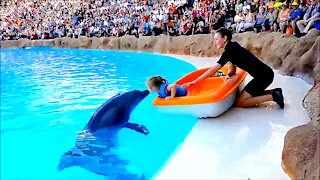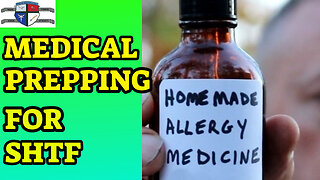A Delightful Feline Becomes a Close Acquaintance with a Baby Monkey
A cat comes to be a close friend of a Baby Monkey. The little cat licks the baby monkey's face comforting it while it sleeps. They look so cute together, the cat gives a big yawn at the end before relaxing next to his best friend.
Kittens are social from a very early age. They rely on interaction with the queen for survival and to learn important life skills such as grooming, hunting, feeding, and agonistic and affiliative behaviours (Figure 4-7). They also rely on interaction with littermates to learn social skills such as threat behaviours and affiliative behaviours. Kittens begin to show social behaviors as their eyes and ears open and their nerves and muscles develop enough that they can change the position of the ears, tail, body, and hair. This begins to occur from 7 days of age onward.
During the first 2 months of their lives, kittens form social relationships. These include relationships with other cats, with people, and with other animals (Figure 4-8, A–C). The kittens prefer their mother over other adult cats but will accept care from familiar adult female cats. This is seen when related queens cross foster their kittens.28 The developmental stages of the kitten and socialization with people have not been studied as thoroughly as in dogs.29 It has been suggested that kittens pass through their major developmental stages at earlier ages than dogs do,30 although more recent research into dog development has suggested that the important phase in terms of dogs’ social development may be earlier than first thought. Certainly, kittens need socialization opportunities at a very young age if they are to accept other cats, people, and other animals as part of their milieu, and research has suggested the period from 2 to 7 weeks of age is of particular importance. When kittens were raised with rats of different strains, in general they did not prey on the strain of rat with which they were raised but would attack rats of different strains,31 which illustrates how important early exposure is to the kittens’ perception of other species later in life.
There are lifelong consequences for a kitten whose social environment is impoverished. Kittens isolated starting from a young age were found to develop behavioral, emotional, and physical problems. They were fearful and aggressive, had difficulty learning, and exhibited random, undirected locomotor activity.32 They also did not play when exposed to other kittens.33 This has important implications for hand-rearing single kittens. Whereas a queen with a single kitten socializes her kitten by playing with it,34 a solo hand-reared kitten does not experience this important interaction. Where possible, single orphan kittens should be fostered onto a queen or raised with other kittens or cats that are friendly towards kittens. If these options are not available, some have suggested that euthanizing the kitten may be better than raising an animal likely to develop behavior problems.
Young kittens also practice hunting behavior in a social setting. The presence of the mother and littermates increases their interest in prey animals.35,36 Kittens learn how to deal with different species of prey from watching their mother dispatch and dismantle them. This social learning continues into adult life as they learn how to deal with novel prey species by watching other cats kill them.31 Kittens also learn a novel operant-conditioning activity faster when they watch their mother learn it and perform it.37
Play is used to practice behaviors needed for adult life. The play behaviors kittens show changes with their age and development. Social play is seen before approximately 8 weeks of age, but it gradually is replaced with play directed at inanimate objects after 8 weeks.38
After weaning, when play is directed towards littermates, it includes predatory and agonistic behaviors30 (Figure 4-9). Play bouts may end in a fight, with the fighting part of the bout becoming more prevalent.30 As kittens reach the age of dispersal, social play and interactions begin to decline.
-
 1:37
1:37
Expert Videos Magnetic Media
2 years agoDolphin kisses a little girl and brings her a gift
39644 -
 15:08
15:08
justintech
22 hours agoCorsair Vengeance i8200 Review - 14900K + 4090
9.96K2 -
 11:31
11:31
ryanhoguepassiveincome
16 hours agoTOP 5 NICHES 🔥 Print on Demand Niche Research # 207 — (5/12/2024)
10.1K2 -
 51:31
51:31
Science & Futurism with Isaac Arthur
1 day agoAutomated Justice
11.7K7 -
 28:23
28:23
TampaAerialMedia
23 hours agoMiami Travel Guide - Downtown, Key Biscayne, Coral Gables
8.26K2 -
 8:05
8:05
Ethical Preparedness
17 hours agoEASY Homemade Allergy Medicine - Medical Prepping for SHTF - Natural Medicine
5.71K6 -
 20:48
20:48
JoBlo Originals
1 day agoWhat Happened to WES STUDI?
15.3K8 -
 57:54
57:54
Proof Bread
1 day agoSwabian Pretzels the Sourdough Way
21.9K6 -
 5:45
5:45
RealReaper
1 day agoThe Gay Black Doctor Who The Devils Chord Sucks
23.5K42 -
 34:35
34:35
Chrissy Clark
1 day ago $0.07 earnedCan Conservatives Believe In Climate Change?
25.2K58